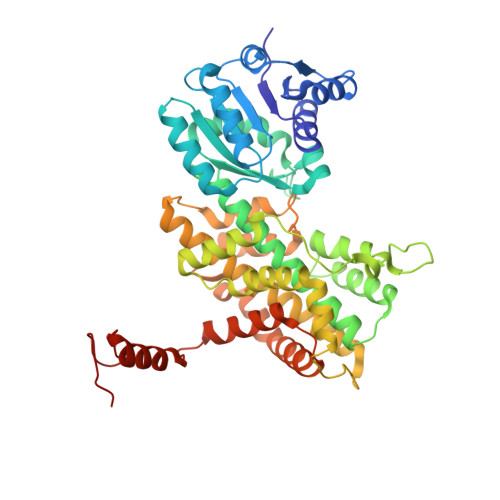Multi-target mode of action of silver against Staphylococcus aureus endows it with capability to combat antibiotic resistance.
Wang, H., Wang, M., Xu, X., Gao, P., Xu, Z., Zhang, Q., Li, H., Yan, A., Kao, R.Y., Sun, H.(2021) Nat Commun 12: 3331-3331
- PubMed: 34099682
- DOI: https://doi.org/10.1038/s41467-021-23659-y
- Primary Citation of Related Structures:
7CB0, 7CB5, 7CB6 - PubMed Abstract:
The rapid emergence of drug resistant Staphylococcus aureus (S. aureus) poses a serious threat to public health globally. Silver (Ag)-based antimicrobials are promising to combat antibiotic resistant S. aureus, yet their molecular targets are largely elusive. Herein, we separate and identify 38 authentic Ag + -binding proteins in S. aureus at the whole-cell scale. We then capture the molecular snapshot on the dynamic action of Ag + against S. aureus and further validate that Ag + could inhibit a key target 6-phosphogluconate dehydrogenase through binding to catalytic His185 by X-ray crystallography. Significantly, the multi-target mode of action of Ag + (and nanosilver) endows its sustainable antimicrobial efficacy, leading to enhanced efficacy of conventional antibiotics and resensitization of MRSA to antibiotics. Our study resolves the long-standing question of the molecular targets of silver in S. aureus and offers insights into the sustainable bacterial susceptibility of silver, providing a potential approach for combating antimicrobial resistance.
- Department of Chemistry, State Key Laboratory of Synthetic Chemistry, CAS-HKU Joint Laboratory of Metallomics on Health and Environment, The University of Hong Kong, Hong Kong S.A.R., People's Republic of China.
Organizational Affiliation:

















